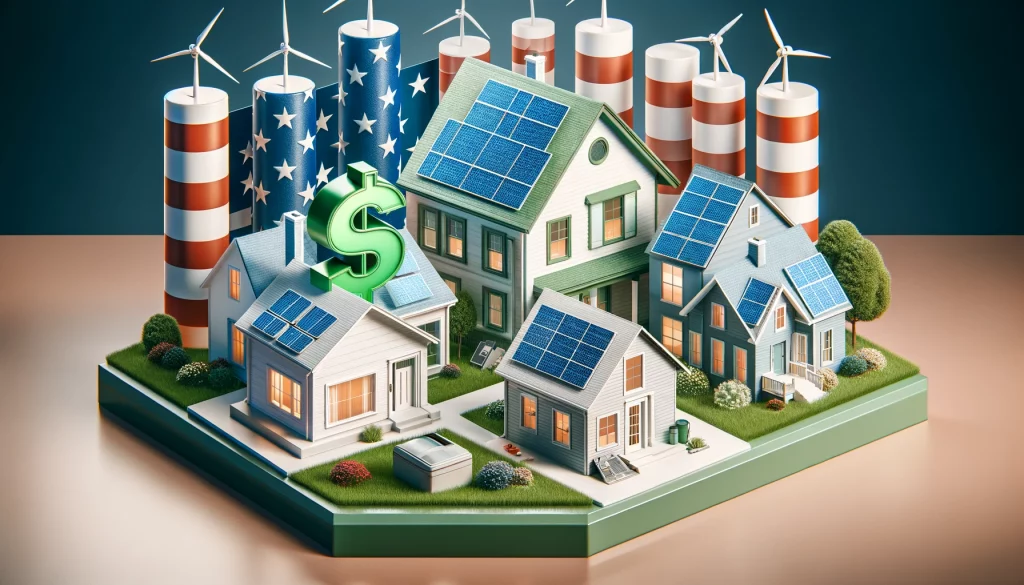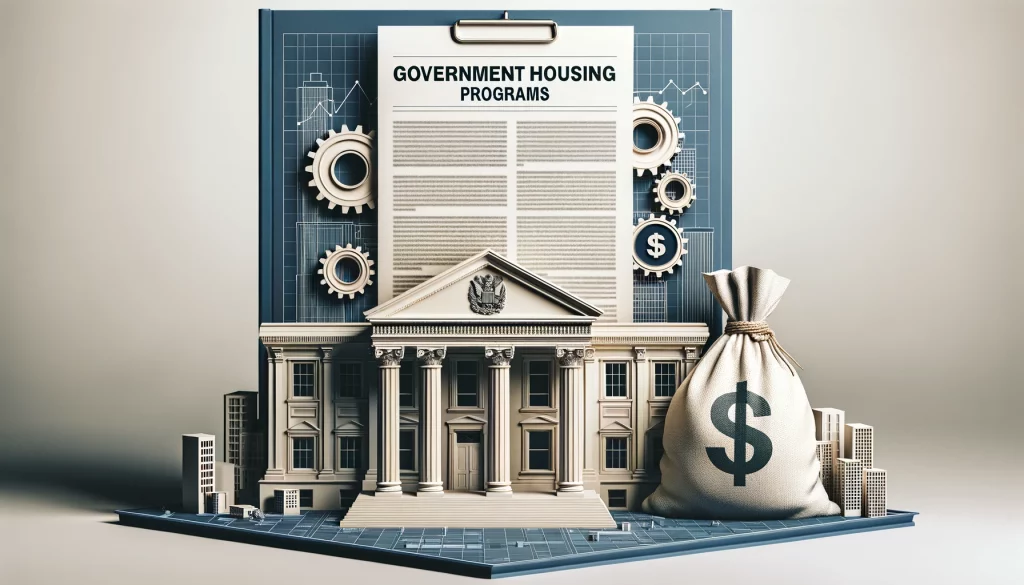As the landscape of residential real estate investment shifts, maximizing benefits for real estate investors is more important than ever. There are several unique opportunities for astute investors to capitalize on. Especially when they skillfully utilize government incentives and tax benefits to promote energy-efficient homes.
An Often not fully explored approach includes leveraging government-backed programs that ensure consistent rental income from low-income tenants. This guide for forward-thinking property investors is crafted to illuminate these lesser-known strategies.
However, maximizing benefits for real estate Investors can boost financial returns and contribute to societal good by offering sustainable and affordable living solutions. Join flipsquad as we unravel the potential of these initiatives and how they can enrich your property investment endeavors.
Energy Efficient Home Improvement Credit
Under this credit, you can claim up to $3,200 for qualified energy-efficient improvements made after January 1, 2023. This includes various home upgrades focusing on energy efficiency.
To claim tax credits for energy-efficient home improvements, IRS Form 5695 is essential. This form is used to calculate and claim the Residential Energy Credits. Form 5695 and its detailed instructions are on the Internal Revenue Service’s (IRS) official website. Here are the direct links:
In addition, visit the IRS website for details on eligibility and claiming the credit to maximize benefits for real estate investors.
Home Electrification Rebate Program: Maximizing Benefits for Real Estate Investors

The Home Electrification and Appliance Rebates, authorized through the Inflation Reduction Act, provide significant opportunities for households to upgrade to high-efficiency electric appliances and systems. These rebates are part of the High-Efficiency Electric Home Rebate Act, which offers point-of-sale consumer rebates to enable low and moderate-income households across America to electrify their homes.
The program is aimed at single and multi-family households and offers various incentives for energy-efficient installations.
For low-income households, HEEHRA covers 100% of electrification project costs up to $14,000. For moderate-income households, it covers 50% of the costs up to $14,000. Eligible electrification projects include heat pump HVAC systems, heat pump water heaters, electric stoves and cooktops, heat pump clothes dryers, and more
How Can Landlords Benefit?
Landlords can potentially benefit from these programs, especially in multi-family buildings. If at least half of the residents in a multifamily building are LMI, the building projects are eligible for the rebates.
Furthermore, the Inflation Reduction Act includes energy efficiency tax incentives and grants that could be relevant to rental housing providers. These include deductions for energy-efficient lighting, HVAC, and building envelope costs as part of a retrofit based on the energy savings achieved.
However, It’s important to note that while these programs offer substantial benefits, they come with specific requirements and limitations, especially in terms of income eligibility and the type of upgrades covered.
Additionally, as these programs are relatively new, the precise implementation details are still being finalized by federal and state agencies.
For more detailed information, visit the Department of Energy’s Home Electrification and Appliance Rebates page, CleanTechnica’s article on HEEHRA, and the National Apartment Association’s overview of the
Inflation Reduction Act’s impact on rental housing providers.
Home Energy Rebates Programs
These programs offer incentives for home energy efficiency upgrades and rebates. Landlords may be eligible if they are improving rental properties classified as multifamily units, especially if a significant portion of the residents are low to moderate-income.
Check with your state’s energy office for specific opportunities, or visit the Department of Energy website for more information on maximizing benefits for real estate investors.
Inflation Reduction Act Tax of 2022

The Inflation Act includes tax breaks to promote energy efficiency. This includes the 179D tax deduction and the 45L tax credit, which have been extended and enhanced under the Act.
These incentives are applicable for both new construction and retrofitting existing buildings. For example, the 45L tax credit, which previously had a cap of $2,000 per unit and was available only for homes meeting the Energy Star benchmark, has been extended and potentially increased to $5,000 per unit.
Landlords of multifamily properties who meet specific energy efficiency criteria can benefit significantly from these incentives.
For more detailed information, you can refer to the articles on Landlord Studio and Tenant Cloud and the overview provided by the National Apartment Association. For specific details, check the IRS website.
Energy-Efficient Mortgages and Financing Options
Specialized mortgages and financing programs are available for energy-efficient homes. Investors can potentially use EEMs to finance improvements in their rental properties. This can include upgrades on insulation, energy-efficient windows, or energy-efficient heating and cooling systems. More information is available on the Department of Energy website.
Utilizing HUD Programs for Home Flipping
The Department of Housing and Urban Development offers various housing and funding for housing and community development. These include support for affordable housing and energy efficiency initiatives.
While HUD focuses on low-income families and communities, some programs may indirectly benefit home flippers through community development.
Taking advantage of HUD involves purchasing and renovating properties in designated areas or participating in community development.
It’s important to note that HUD’s programs often come with specific conditions and requirements. It’s crucial to understand these thoroughly before proceeding. For detailed information, visit the HUD’s official website.
Maximizing Benefits for Real Estate Investors for Low-Income Government-Backed Programs

Several government programs offer landlords a guarantee of rent payment for low-income renters. These programs help investors by providing financial security, ensuring steady rental income, and assisting low-income renters in securing affordable housing. Here are the key programs:
The Housing Choice Voucher Program (Section 8) enables low-income families to lease or purchase safe, affordable, privately owned rental housing. The government pays a portion of the rent directly to the landlord on behalf of the participating families.
The local housing authority determines the rent amount based on fair market rates. Apply to rent properties to Section 8 tenants by contacting local public housing agencies. More details are available on the USAGov website.
Section 42 – Low-Income Housing Tax Credit
This program provides tax credits to investors to develop affordable rental housing. Investors receive a federal income tax reduction over ten years. The tax credit encourages investors to build affordable housing and to cap rental rates for low-income tenants.
The rent is set as a percentage of the area’s median income. Property owners who take advantage of the credit must restrict a certain percentage of the building occupancy to low-income households. Detailed information about this program can be found on iPropertyManagement.
Participants in these programs must ensure their properties meet specific standards. There are also routine inspections to adhere to. These programs provide a stable source of income for landlords.
Thanks to Flipsquad’s innovative new app, finding lucrative deals just got easier. Aimed at investors, this cutting-edge platform redefines how deals are discovered and executed in the residential real estate market. Don’t take unnecessary risks by missing out on the next big deal!
These programs and tax benefits represent an opportunity to contribute to social welfare while securing financial returns. Always consult a tax professional to ensure compliance with all relevant regulations to maximize benefits for real estate investors.

